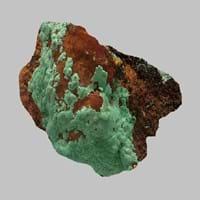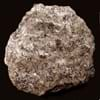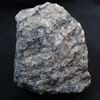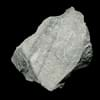Definition
Slate is a fine-grained, foliated, homogeneous metamorphic rock derived from an original shale-type sedimentary rock composed of clay or volcanic ash through low-grade regional metamorphism
Gossan is intensely oxidized, weathered or decomposed rock, usually the upper and exposed part of an ore deposit or mineral vein.
Discoverer
Unknown
Cornish Gossen
Etymology
From Old French esclate, from esclat (French éclat)
From Cornish gossen from gos, blood from Old Cornish guit
Class
Metamorphic Rocks
Metamorphic Rocks
Sub-Class
Durable Rock, Medium Hardness Rock
Durable Rock, Medium Hardness Rock
Group
Not Applicable
Not Applicable
Other Categories
Fine Grained Rock, Opaque Rock
Fine Grained Rock, Medium Grained Rock, Opaque Rock
Texture
Foliated
Rough, Sandy
Color
Black, Brown, Buff, Green, Light to Dark Grey, Purple, Red, Shades of Blue
Brown, Brown- Black, Gold, Green, Rust
Durability
Durable
Durable
Scratch Resistant
Yes
Yes
Appearance
Dull
Dull and Banded
Interior Uses
Bathrooms, Decorative Aggregates, Entryways, Floor Tiles, Flooring, Homes, Hotels, Interior Decoration, Kitchens, Stair Treads
Countertops, Decorative Aggregates, Interior Decoration
Exterior Uses
As Building Stone, As Facing Stone, Garden Decoration, Paving Stone
As Building Stone, As Facing Stone, Paving Stone, Garden Decoration, Office Buildings
Other Architectural Uses
Curbing
Curbing
Construction Industry
As Dimension Stone
As Dimension Stone, Cement Manufacture, Construction Aggregate, for Road Aggregate
Medical Industry
Not Yet Used
Not Yet Used
Antiquity Uses
Artifacts, Monuments, Sculpture, Small Figurines
Artifacts
Commercial Uses
Blackboards, Commemorative Tablets, Laboratory bench tops, Standard material for the bed of Billiard table, Standard material for the beds of Pool and Snooker table, Tombstones, Used in aquariums, Writing Slates
Cemetery Markers, Commemorative Tablets, Gemstone
Types
Not Available
Translocated gossan and Leakage gossan
Features
Easily splits into thin plates, Surfaces are often shiny, Very fine grained rock
Clasts are smooth to touch, Easily splits into thin plates
Archaeological Significance
Monuments
Used
Not Yet Used
Famous Monuments
Data Not Available
Not Applicable
Sculpture
Used
Not Yet Used
Famous Sculptures
Data Not Available
Not Applicable
Figurines
Used
Not Yet Used
Formation
Slate is a low grade metamorphic rock that is generally formed by metamorphosis of mudstone or shale, under relatively low pressure and temperature conditions.
Earth movements can cause rocks to be either deeply buried or squeezed and hence the rocks are heated and put under great pressure.
Mineral Content
Apatite, Biotite, Chlorite, Feldspar, Graphite, Hematite, Kaolinite, Magnetite, Pyrite, Tourmaline, Zircon
Apatite, Augite, Biotite, Bronzite, Calcite, Chert, Epidote, Feldspar, Hornblende, Micas, Plagioclase, Pyroxene, Quartz, Sulfides, Zircon
Compound Content
Aluminium Oxide, CaO, Iron(III) Oxide, Potassium Oxide, MgO, Sodium Oxide, Silicon Dioxide, Titanium Dioxide
Aluminium Oxide, CaO, Fe, FeO, Silicon Dioxide, Sulphur
Types of Metamorphism
Burial Metamorphism, Cataclastic Metamorphism, Regional Metamorphism
Not Applicable
Types of Weathering
Biological Weathering, Chemical Weathering, Mechanical Weathering
Not Applicable
Types of Erosion
Coastal Erosion, Glacier Erosion, Water Erosion, Wind Erosion
Chemical Erosion, Sea Erosion, Wind Erosion
Grain Size
Very fine-grained
Fine to Medium Grained
Fracture
Splintery
Conchoidal
Streak
Light to dark brown
White to Grey
Porosity
Less Porous
Highly Porous
Compressive Strength
Not Available
Cleavage
Slaty
Not Available
Toughness
1.2
Not Available
Specific Gravity
2.65-2.8
2.0
Transparency
Opaque
Opaque
Density
2.6-2.8 g/cm3
Not Available
Resistance
Heat Resistant, Impact Resistant, Pressure Resistant, Wear Resistant
Heat Resistant, Impact Resistant, Pressure Resistant
Deposits in Eastern Continents
Asia
China, India, Turkey
China, India, Indonesia, Russia, Singapore, South Korea
Africa
Not Yet Found
Cape Verde, Ethiopia, Ghana, South Africa, Western Africa
Europe
Belgium, France, Germany, Italy, Norway, Portugal, Spain, United Kingdom
Albania, France, Germany, Great Britain, United Kingdom
Others
Arctic
Not Yet Found
Deposits in Western Continents
North America
USA
Canada, USA
South America
Brazil
Brazil, Colombia, Ecuador
Deposits in Oceania Continent
Australia
Not Yet Found
New South Wales, South Australia, Western Australia
All about Slate and Gossan Properties
Know all about Slate and Gossan properties here. All properties of rocks are important as they define the type of rock and its application. Slate and Gossan belong to Metamorphic Rocks.Texture of Slate is Foliated whereas that of Gossan is Rough, Sandy. Slate appears Dull and Gossan appears Dull and Banded. The luster of Slate is dull while that of Gossan is metallic. Slate is available in black, brown, buff, green, light to dark grey, purple, red, shades of blue colors whereas Gossan is available in brown, brown- black, gold, green, rust colors. The commercial uses of Slate are blackboards, commemorative tablets, laboratory bench tops, standard material for the bed of billiard table, standard material for the beds of pool and snooker table, tombstones, used in aquariums, writing slates and that of Gossan are cemetery markers, commemorative tablets, gemstone.










